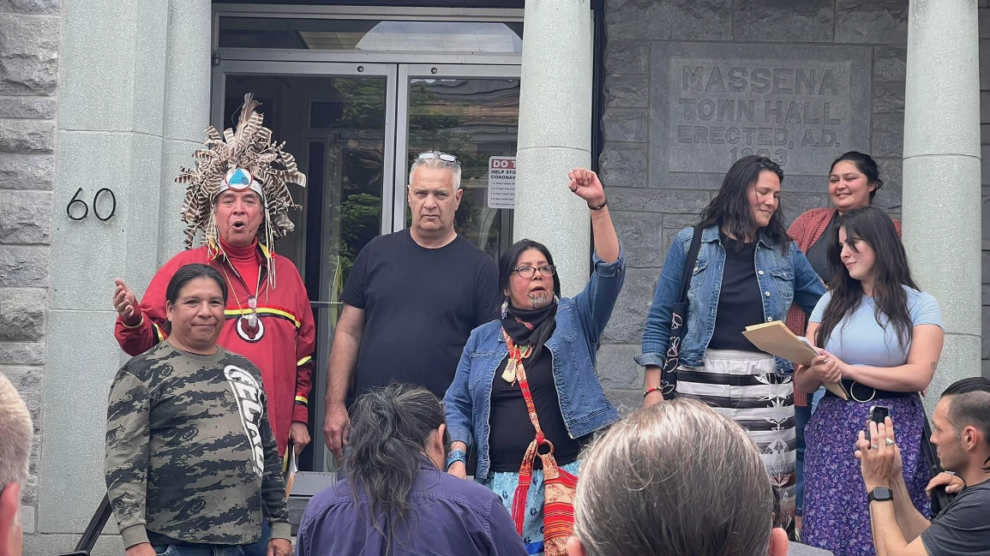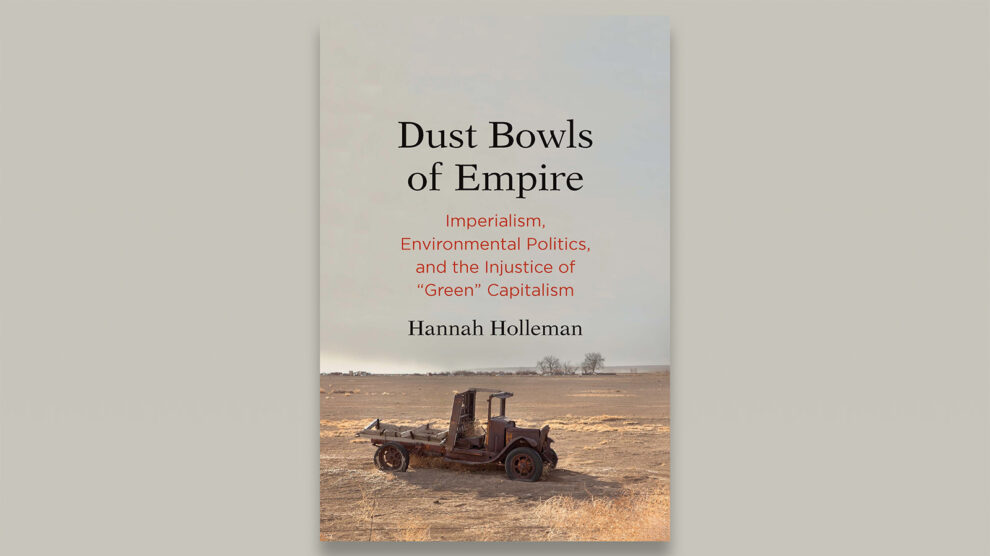An Environmental Nakba: The Palestinian Environment Under Israeli Colonization
By Mazin B. Qumsiyeh and Mohammed A. Abusarhan
Volume 23, number 1, Science Under Occupation

Prior to the 1948 war and even the Zionist Congress of 1897, Palestine had some thirteen hundred villages and towns, each with a small and manageable population living sustainably with nature. The land was owned or worked by the Palestinian people, who were 85 percent Muslim, 9.2 percent Christian, and 5.3 percent Jewish.1 This structure changed radically when mostly European Jews mobilized for massive migration to Palestine and began to assume colonial control over the land. In its long recorded history, Palestine has indeed undergone significant environmental and demographic changes, but it is really only in the past century that these changes took on a colonial dimension. The best-known of these changes is the forcible removal of the indigenous population, which reached its peak between 1948 and 1950. During those years, five hundred villages and towns were destroyed by Zionist militias, resulting in the largest wave of refugees after the Second World War.2 But the environmental dimensions of the catastrophe, or Nakba, is little talked about.3 In 1967 Israel occupied the remaining 22 percent of historic Palestine, namely Gaza and the West Bank, and built settlements throughout these occupied territories in contravention of to international law (the Fourth Geneva Convention).4 These dramatic transformations were detrimental to the people and nature of Palestine. Here, we focus on the environment and sustainability in Palestine, an often overlooked casualty of the colonial occupation.
Colonial Impact on the Environment
Once Israel was declared a Jewish state in May 1948, native trees (such as oaks, carobs, and hawthorns) and agricultural crops (olives, figs, and almonds) were systematically uprooted and replaced by European pine trees. These planted pines reduced biodiversity and harmed the local environment.5 Pines shed leaves that are acidic and prevent the growth of underbrush plants. These trees are also very susceptible to fire because of their resins. Indeed, fires are now a common occurrence in the areas in which they were planted. Trees, however, were not the only targets of Israel’s colonial practices. Natural resources, primarily water aquifers, have also been confiscated from the Palestinians. This often happened by deliberately building Israeli colonies on hilltops to ensure effective access to these resources and to maintain surveillance over the Palestinians.6 Environmental sustainability was never a priority for Israel, whose practices detrimentally affected the landscape, resulting in the destruction of diverse habitats and water runoff.7
The occupation of the West Bank and Gaza in 1967 opened opportunities for Israeli industries. Many of the highest polluting companies moved to the West Bank and were provided with tax incentives to do so.8 There the companies only faced the opposition of the Palestinians who had no way to stop them. For example, pesticide and fertilizer manufacturer Geshuri, which faced significant court setbacks in its original plant in Kfar Saba, was moved to an area adjacent to Tulkarm inside the West Bank in 1987. Significant pollution caused by Geshuri and other companies in this area has damaged citrus trees and vineyards.9 Moreover, research on genotoxicity in the Occupied Territories shows the significant impact of the Barkan industrial settlement on the Palestinians of Burqeen village.10 As DNA and chromosomes are damaged, there are increasing cases of miscarriage, cancer, and congenital birth defects. Air and water pollution has also caused diseases ranging from respiratory illness to gastrointestinal failures. Other health-related problems have resulted from the Israeli practice of sending trash, including electronic debris, across the Green Line.11 This debris is often recycled by destitute Palestinians in environmentally harmful ways, such as using fire to remove plastic from useful metals. This practice releases substances that cause serious ailments, including cancer and lung diseases.
Israel has also built an extensive network of roads and other infrastructure serving settlers. Trees and any buildings within seventy-five meters of these roads are bulldozed and declared closed military zones to the Palestinians. The total area used in the West Bank for settler roads was 51.2 km2 in 2000 and has doubled since. Added to the 150.5 km2 of built settlement-colonies, this is a huge area that was previously used by Palestinians for agriculture, pasture, or leisure.12 The disparity between settlers and natives in land control and standard of living is compounded by disparity in access to other natural resources, especially water.13 Israeli officials have deliberately ignored facts and selectively presented falsified or inaccurate data to serve their political interests in the Jordan River while catastrophically impacting Palestinian access to water. For example, 91 percent of the total water of the West Bank is expropriated for Israeli settler use.14
The Israeli occupation has resulted in considerable loss of biodiversity in the Palestinian territories. This began many years ago when Israel diverted the waters of the Jordan Valley, and when trees surrounding destroyed Palestinian villages were replaced by monoculture crops. More recently the apartheid wall in the West Bank obstructs human activities and animal movement, causing a loss of both human and animal biodiversity.15 Humans and nature have been intertwined in Palestine for thousands of years, and the continuing loss of biodiversity irreversibly damages Palestine’s cultural and natural heritage, threatens endangered species, and harms agriculture and environmental sustainability.16
There are many other practices through which the occupation has undermined sustainable development and protection of the environment. These include refusal to issue building permits in most of the West Bank and destruction of any “unauthorized” structures, even including cisterns and solar panels.17 Another example is the policy of Israel to absorb the Palestinian tourism sector, including ecotourism.18
One of the major threats to the Palestinian landscape is the confiscation of land for settlements, sometimes with temporary false excuses of preventing damage to nature.19 For example, the Palestinian village of Ras Imweis and six adjacent areas were initially confiscated under such an excuse then turned into the settlement of Nahal Shilo. In many other instances, the Israeli occupation authorities prevented Palestinian sustainable development by claiming certain stretches of land as “green areas,” then turning them into Jewish settlements within the span of two to three years. Such exploitation was also obvious in the Bethlehem district, where Abu Ghuneim Mountain, one of the largest forests in the Bethlehem district, was turned into the Har Homa settlement in 1997. This is how Israel is “green-washing” the occupation.20
International Failure
Israel’s colonial settlements have had a devastating impact on the Palestinian environment and on indigenous Palestinian lives. This raises significant questions about the possibility of sustainable development under occupation.21 Indeed, there are ample grounds, backed by solid scientific and legal research, to bring claims of environmental injustice to local, national, and international forums.
Article 49 of the Fourth Geneva Convention (which Israel ratified) states that “the Occupying Power shall not deport or transfer parts of its own civilian population into the territory it occupies,” adding that life in military occupied areas must be allowed to proceed as normally as possible. UN Security Council Resolution 465 of 1980 reads in part that “all measures taken by Israel to change the physical character, demographic composition, institutional structure or status of the Palestinian and other Arab territories occupied since 1967, including Jerusalem, or any part thereof have no legal validity and that Israel’s policy and practices of settling parts of its population and new immigrants in those territories constitute a flagrant violation of the Fourth Geneva Convention.”
Israel has largely ignored international law. This impunity is enabled by the international community. For example, a 2003 United Nations Environment Program report identified key effects of the occupation on the environment and made over one hundred recommendations but failed to prioritize them or set target dates. This failure of the international legal system to hold Israel accountable is not just related to environmental issues, but extends across many other areas including Israel’s abuse of prisoners and destruction of civilian life.22 Israel’s aggressive political lobby has also influenced many governments and shapes decisions at the UN, where the United States has veto power.23 The international failure to hold Israel accountable has left the issue—like in South Africa under apartheid—up to organizers and activists on the ground.24
Grassroots Organizing for Environmental Justice
In situations where international law fails, civil society often intervenes, as we have seen in the movements for boycott, divestment, and sanctions (BDS) in South Africa and in Palestine against the respective apartheid regimes. The BDS movement and other forms of civil or popular resistance do make a difference.25 That we have not yet reached the post-apartheid era like South Africa is due to the fact that the settler-colonial occupation of Palestine has been strengthened by international complicity and by agreements, such as the Balfour Declaration and resolutions by the League of Nations and the UN, that exclude the Palestinians. The international community has long abrogated its responsibilities and has thus given Israel a green light to engage in significant violations of human rights (including environmental rights). Civil society must increase pressure on international leaders to assume their responsibility to return dignity and sovereignty to the Palestinian people. International bodies must enforce law and implement sanctions against Israel to rectify the rampant environmental injustices that disproportionately harm the indigenous Palestinian population. Palestinians have no recourse to domestic laws since what laws are available are those of an apartheid settler-colonial state.26 There is recent scholarly and activist interest in using international law to buttress environmental justice claims, especially in developing countries, but as Noura Erekat pointed out, this is undermined by the imbalance of power and influence of the Zionist movement around the world.27 Although we are witnessing the growth of the BDS movement, we need much more pressure and mobilization to enforce recognition of Palestinian rights.28
Nevertheless, a significant movement for environmental justice and sustainability is growing even under the very difficult conditions of occupation and colonization. People are working at the grassroots level to build popular institutions that enhance and promote sustainable natural and human communities in the context of a larger anti-colonial struggle.29 Educating new generations of Palestinians in their culture and history can also help address some of the challenges Palestinians are facing.30 Because colonizers work to separate the colonized from their land and destroy their culture and history, strengthening the connection between the indigenous people and their land will help new generations understand the value of nature beyond the exploitative framework imposed by colonialism.31 Environmental struggles are an integral part of the struggle for freedom and justice in Palestine as elsewhere.
Acknowledgement: We thank the Darwin Initiative (UKaid) and the European Union for their support of some of our work at PMNH/PIBS/Bethlehem University.
About the Authors
Mazin B. Qumsiyeh is a professor and researcher at Bethlehem and Birzeit Universities. He previously served on the faculties of the University of Tennessee, Duke University, and Yale University. He and his wife returned to Palestine in 2008 to start a number of institutions and projects, including the Palestine Institute for Biodiversity and Sustainability (PIBS) at Bethlehem University. He, his wife, and volunteers and staff at PIBS have “joyful participation in the sorrows of this world” and make a difference for sustainability of nature and human communities.
Mohammed A. Abusarhan is a masters student in biotechnology at Bethlehem University and Palestine Polytechnic University. He earned a degree in Biology from Bethlehem University. Since 2017, he has worked at the Palestine Museum of Natural History as a Museum Biologist conducting animal collecting, taxidermy, and identification. His research interests are focused on conservation, museum digitization, biodiversity databases, and bat echolocation. He has published several research articles and spent the summer of 2019 in Germany in a prestigious laboratory as an exchange researcher.
References
- “Demographics of Historic Palestine prior to 1948,” Canadians for Justice and Peace in the Middle East CJPME, July, 2004, https://www.cjpme.org/fs_007.
- Ilan Pappe, The Ethnic Cleansing of Palestine (Oxford: Oneworld Publication, 2006).
- Mazin B. Qumsiyeh, “The Coming Environmental Nakba” in The Third Palestinian Environmental Awareness and Education Conference. EEC (Bethlehem, 2013), 57–59.
- Nur Masalha, Expulsion of the Palestinians: The Concept of “Transfer” in Zionist Political Thought, 1882–1948 (Institute for Palestine Studies, 1992). See also Mazin B. Qumsiyeh, Sharing the Land of Canaan: Human Rights and the Israeli-Palestinian Struggle (London: Pluto Press, 2004).
- Pappe, The Ethnic Cleansing of Palestine.
- Meron Benvenisti, Sacred Landscape: The Buried History of the Holy Land since 1948 (Berkeley: University of California Press, 2002). See also Eyal Weizman, Hollow Land: Israel’s Architecture of Occupation (Brooklyn: Verso Books, 2012).
- ARIJ, Status of Environment in OPT (Applied Research Institute – Jerusalem, 2015).
- United Nations Conference on Trade and Development, “The Economic Costs of the Israeli Occupation of the Palestine People: The Unrealized Oil and Gas Potential,” United Nations, 2019 Report.
- ARIJ, Status of Environment in OPT.
- Khloud M. Hammad and Mazin B. Qumsiyeh, “Genotoxic Effects of Israeli Industrial Pollutants on Residents of Bruqeen Village (Salfit District, Palestine),” International Journal of Environmental Studies 70, no. 4 (2013): 655–62.
- Nadia Khlaif and Mazin B. Qumsiyeh, “Genotoxicity of Recycling Electronic Waste in Idhna, Hebron District, Palestine,” International Journal of Environmental Studies 74, no. 1 (2017): 66–74.
- ARIJ, Status of Environment in OPT.
- Neve Gordon, “From Colonization to Separation: Exploring the Structure of Israel’s Occupation,” Third World Quarterly 29, no. 1 (2008): 25–44. See also Weizman, Hollow Land: Israel’s Architecture of Occupation.
- Clemens Messerschmid and Jan Selby, “Misrepresenting the Jordan River Basin,” Water Alternatives 8, no. 2 (2015): 258–79.
- Qumsiyeh, Mazin B. Unpublished data.
- Alon Tal, Pollution in a promised land: An environmental history of Israel (Berkeley, Calif:Univ. of California Press, 2002); International Union for Conservation of Nature – Regional Office for West Asia (IUCN – ROWA), State of Palestine Fifth National Report to the Convention on Biodiversity. Amman, Jordan 2015; Abdallah T, Swaileh K. “Effects of the Israeli Segregation Wall on biodiversity and environmental sustainable development in the West Bank, Palestine,” International Journal of Environmental Studies 68: 543-555 (2011).
- MOPAD, “State of Palestine National Development Plan 2014-2016’” (Ministry of Planning and Administrative Development, 2014).
- Talia Shay, “The Ethnocracy of the Palestinian Urban Space and the Indigenous Approach: Praxis and Theory,” Archaeologies 12 (2016): 73–90. See also Rami Isaac, C. Michael Hall, and Freya Higgins-Desbiolles, eds., The Politics and Power of Tourism in Palestine (London: Routledge, 2015).
- Dror Etkes and Hagit Ofran, “Construction of Settlements and Outposts on Nature Reserves in West Bank,” Peace Now, February 13, 2007, https://peacenow.org.il/en/nature-reserve.
- Sara Hughes, “‘Greenwashing’ the Occupation: The Role of Environmental Governance and the Discourse of Sustainability in Sustaining the Israeli Occupation of Palestine,” in The Annual Meeting of the American Association of Geographers, 2018.
- Jad Isaac, Khaldoun Rishmawi, and Abeer Safar, “The Impact of Israel’s Unilateral Actions on the Palestinian Environment,” (Applied Research Institute-Jerusalem, 2004).
- Susan M Akram et al., eds., International Law and the Israeli-Palestinian Conflict: A Rights-Based Approach to Middle East Peace (London: Routledge, 2010). See also Noura Erakat, Justice for Some: Law and the Question of Palestine (Stanford, California: Stanford University Press, 2019).
- Mazin B. Qumsiyeh, Sharing the Land of Canaan: Human Rights and the Israeli-Palestinian Struggle (London: Pluto Press, 2004).
- Mazin B. Qumsiyeh, Popular Resistance in Palestine: A History of Hope and Empowerment (London: Pluto Press, 2012).
- Qumsiyeh, Popular Resistance in Palestine.
- “Environmental Injustice in Occupied Palestinian Territory: Problems and Prospects,” Al-Haq, August 4, 2015.
- Ruchi Anand, International Environmental Justice: A North-South Dimension (London: Routledge, 2017); Erakat, Justice for Some.
- Mazin B. Qumsiyeh, “A Critical and Historical Assessment of Boycott, Divestment, and Sanctions (BDS) in Palestine,” in Conflict Transformation and the Palestinians (Routledge, 2016), 114–29.
- Mazin B. Qumsiyeh, “Nature Museums and Botanical Gardens for Environmental Conservation in Developing Countries” BioScience 67, no. 7 (2017): 589–90. See also Mazin B. Qumsiyeh et al., “Role of Museums and Botanical Gardens in Ecosystem Services in Developing Countries: Case Study and Outlook,” International Journal of Environmental Studies 74, no. 2 (2017): 340–50, https://doi.org/10.1080/00207233.2017.1284383.
- Mazin. B. Qumsiyeh, “Ethnoecology of Palestine: Preserving Culture Heritage of Palestine’s Natural History,” presented at the 4th Hyperheritage International Seminar Proceedings (International Conference): Smart Heritage, 2018.
- Michael R Dove, “Indigenous People and Environmental Politics,” The Annual Review of Anthropology, 35 (2006): 191–208.





